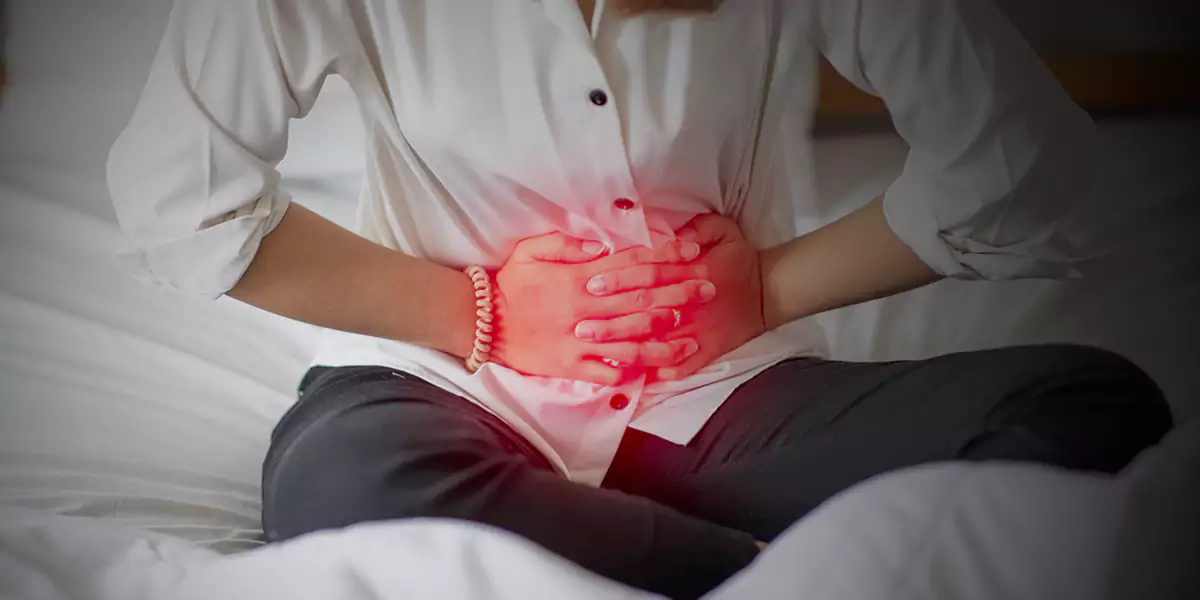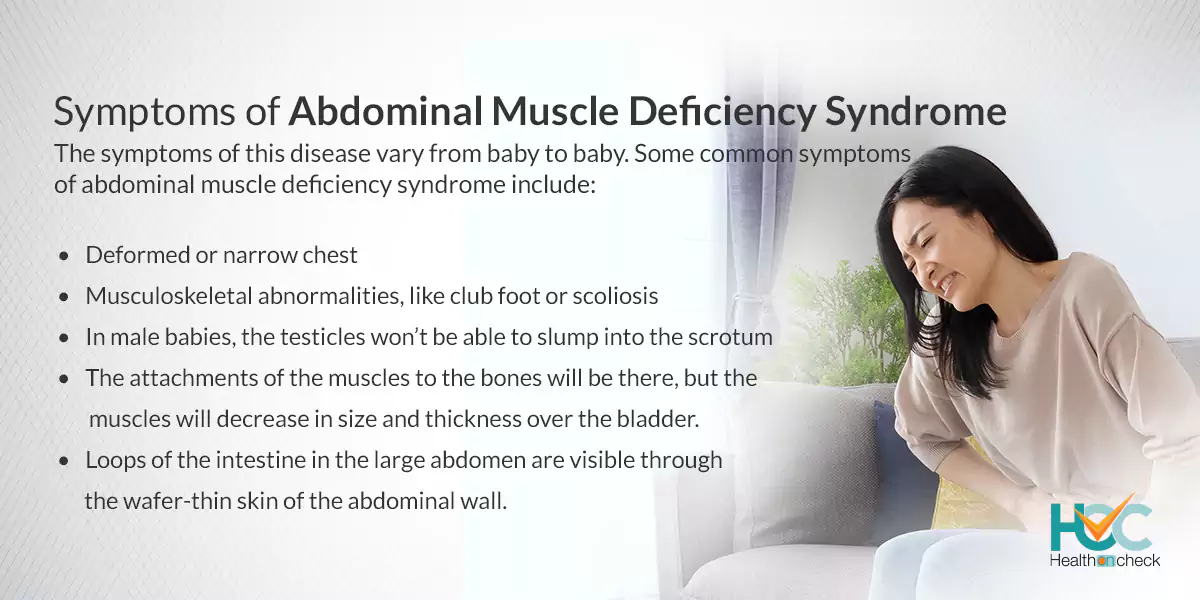All About Abdominal Muscle Deficiency Syndrome

What is Abdominal Muscle Deficiency Syndrome?
Abdominal muscle deficiency syndrome, commonly known as prune belly syndrome is a rare disease that affects newborns. If a baby is born with abdominal muscle deficiency syndrome, then there are three main features of this disease include:
- The abdominal muscles of the baby are absent or weak which causes the skin of the baby’s belly to become wrinkled.
- If it’s a baby boy then his testicles won’t be there in the scrotal sac, a condition known as undescended testicles. Baby girls have defects in their external genitals.
- The formation of the baby’s urinary system (kidneys and bladder) will be abnormal.
Other parts of the baby’s body such as the heart, lungs, kidneys, intestines, and skeletal system might be affected by abdominal muscle deficiency syndrome. Around 1 baby in 40,000 babies born gets this disease making it a rare disease. Along with being rare, abdominal muscle deficiency syndrome is very dangerous as a few babies may die during the 20 weeks of pregnancy in the uterus or after some months of taking birth.
What are the Types of Abdominal Muscle Deficiency Syndrome?
There are no types of abdominal muscle deficiency syndrome.

What are the Symptoms of Abdominal Muscle Deficiency Syndrome?
The symptoms of this disease vary from baby to baby. Some common symptoms of abdominal muscle deficiency syndrome include:
- Because of poor development or absence of abdominal muscles, giving the abdominal wall a wrinkled or prune-like appearance.
- Loops of the intestine in the large abdomen are visible through the wafer-thin skin of the abdominal wall.
- The attachments of the muscles to the bones will be there, but the muscles will decrease in size and thickness over the bladder.
- In male babies, the testicles won’t be able to slump into the scrotum
- Deformed or narrow chest
- Problems in the urinary system include abnormally large kidneys, vesicoureteral reflux, blocked or enlarged ureters, and bladder.
- Musculoskeletal abnormalities, like club foot or scoliosis
- Problems in the intestines and stomach
- Problems in the structure of the heart
- The appearance of the navel is like a vertical slit or a linear central scar.
What Causes Abdominal Muscle Deficiency Syndrome?
The exact cause of abdominal muscle deficiency syndrome and a baby being born with this disease is still unknown. Some theories suggest that it may be genetically inherited as if one baby has it then there are chances that the next baby may also get born with it but it’s not compulsory. Any kind of abnormality in the bladder during fetal development may also cause it. Some researchers suggest that if abdominal muscles are not developed completely it may also cause abdominal muscle deficiency syndrome. Muscle deficiency and urinary abnormalities can be also a reason or a defective nervous system responsible for early impairment of abdominal muscles may also cause abdominal muscle deficiency syndrome.
What are the Risk Factors of Abdominal Muscle Deficiency Syndrome?
There are no known risk factors for abdominal muscle deficiency syndrome but it’s believed that baby boys have more chances of developing this disease than baby girls. Genetics may also play an important role but these are mere possibilities and nothing is clinically proven yet.
What are the Complications of Abdominal Muscle Deficiency Syndrome?
The fatality rate of babies born with abdominal muscle deficiency syndrome is very high and some babies may die before getting birth, in the uterus only. Very less is known about this disease but some possible complications of abdominal muscle deficiency syndrome may be:
- Babies born with this condition can’t totally empty their bladder which can lead to serious problems in the kidney, bladder, or ureter.
- Conditions such as pulmonary hypoplasia and renal dysplasia may occur in severe cases.
- Problems in the urinary tract may develop and eventually, a renal transplant may be needed.
- Lungs may not develop fully giving rise to various lung-related disorders.
How Abdominal Muscle Deficiency Syndrome is Diagnosed?
A baby born with abdominal muscle deficiency syndrome is visibly detected because of the baby’s appearance including the most important sign, a wrinkled abdomen. Your doctor may refer some tests to confirm abdominal muscle deficiency syndrome including:
Renal bladder ultrasound (RBUS): Sound Waves are used to create outlines of the bladder and kidneys which allows doctors to detect if there is hydronephrosis and how large the bladder has become.
Voiding cystourethrogram (VCUG): In this test, a catheter (tube) is passed through the baby’s urethra into the bladder and the bladder will slowly fill with a solution and during the process, pictures are taken with a special equipment known as fluoroscopy to take pictures. This is done to check whether the solution is going back up into the kidneys to confirm vesicoureteral reflux (VUR). Pictures are taken when the baby is urinating to check if there is a blockage.
MAG III renal scan: During this process, a special solution called an isotope is injected into the veins using an intravenous line (IV). It helps to see the kidneys clearly. It’s done to check how the kidneys are functioning along with the extent of blockage if noted.
MRI/MRU: MRI is a radiation-free diagnostic test where an amalgamation of a huge magnet, radio frequencies, and a computer is to take elaborate images of the kidneys, ureters, and bladder which helps to diagnose abdominal muscle deficiency syndrome easily.
Video urodynamic study: This study checks how well the baby’s bladder fills and empties. This study is done to check how the bladder is storing urine and how it empties it along with examining the bladder outlet’s function.
Blood tests: Blood tests are done to check how the kidneys are functioning.
What are the Treatment Options Available for Abdominal Muscle Deficiency Syndrome?
The treatment depends on various factors including the overall health of the baby, age, affected areas, severity, etc. If the symptoms are mild then antibiotics are given to ease the symptoms. Medicines are given to babies with severe constipation and respiratory infections which may occur due to some features of this disease like a weak cough or damaged Valsalva maneuver.
In some cases, mostly in severe cases, a surgery or multiple surgeries may be needed to fix some symptoms of abdominal muscle deficiency syndrome. Surgeries are done to treat this disorder mostly include.
Orchiopexy: This surgery is done when the baby is about 6 months old to fix the undescended testicles.
Abdominal wall reconstruction: This surgery is done generally along with other surgeries to reconstruct the abdominal wall.
Urinary tract surgery: The problem in the urinary tract is treated with this surgery which may be carried out early or delayed based on the severity of the conditions.
Kidney transplant: Nearly one-third of babies require this surgery abdominal muscle deficiency syndrome directly affects the kidney.
Many babies may require numerous surgeries to mend the bladder, the abdominal wall, genitals (to put a baby boy’s testicles back into the scrotum), and other urinary tract issues.
Living with Abdominal Muscle Deficiency Syndrome
There are various possible outcomes when a baby is born with abdominal muscle deficiency syndrome. A few babies die after some months of getting birth and some babies may be able to live a normal life if the condition is cured with treatments available. The treatment plan is based on the health condition of the baby and its severity. Most babies need life-long follow-up even after becoming adults to live a normal life.
Whom to Consult?
If there are infections in the urinary system of the baby after he/she is born then it may be a sign of abdominal muscle deficiency syndrome. The most visible sign of this disease is a wrinkled abdominal wall. Your doctor will check for other symptoms and to confirm abdominal muscle deficiency syndrome, the baby may have to go through some tests and if abdominal muscle deficiency syndrome is diagnosed, then the doctor will start treatment based on the severity of the disorder.




